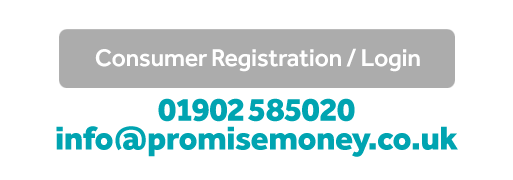Asset Finance
Your bank may offer 100’s of products and plans.
Promise Money has over 10,000

What is Asset Finance
Asset finance is a loan to a business for assets such as equipment, machinery or vehicles that the business would not normally be able to afford. Additionally, this type of finance can allow you to release cash from assets you already own. You could also use existing assets as security against a business loan.
This type of loan is perfect for a business that either has the opportunity to grow, or needs to grow, but don’t have the funds needed. It is also used to spread large payments over a longer period of time.
Overall, asset finance can relate to a large number of business loans. The main stipulation is that an asset is involved in some form.
Types of Asset Finance
There are two main types of asset finance. The first of these is lending secured against an existing asset, and the second is borrowing finance to get more assets. Within these two main sections there are multiple variations.
Hire/lease purchase
This is a way to buy an asset over an extended period of time by paying in instalments. Over the course of the payments, the provider still legally owns the asset. However, after all of the instalments have been paid, legal ownership passes to the borrower. Normally a 10% deposit is paid upfront, with smaller instalments being paid out over the length of the term.
Equipment leasing
Equipment leasing is essentially a way for businesses to rent an expensive piece of equipment. The provider buys the equipment, and then rents it to a business for an agreed time for a fixed cost. Over the course of this term, maintenance and service costs are down to the provider, not the business. At the end of the term, the business can either return the equipment to the provider, buy it from them, or extend the term. In some cases it is also possible to upgrade the equipment.
Finance leasing
This is a type of equipment leasing in which the business rents the equipment for most of its useful life. A key aspect of finance leasing is that the business takes on a large proportion of the risks and rewards while never actually owning the asset. For example, the business will be responsible for maintainence and fluctuations in value.
Finance leases start with a primary rental period. In this period, the payments will add up to the full cost of the asset plus interest. When the primary rental period has finished, the asset will normally be towards the end of its useful life. However, you can continue to rent and use the asset, normally with cheaper fees. An alternative option that could be available is to sell the asset, and keep a share of the income from the sale.
Operating leasing
This is another type of equipment leasing. The business only rents the equipment for a fraction of the equipments useful life. This can also be known as business contract hire.
This is the simplest type of equipment leasing. The business doesn’t take on any of the risks or rewards of the equipment, including maintenance. Operating leases generally have a short lease period, while the provider normally offers some kind of maintenance provision. This makes operating leases more flexible than other types.
Asset refinancing
Asset refinancing can mean multiple things depending on context. It could either refer to using an asset as security, or when a business sells an asset to a provider, and then leases the asset back from them.
Refinancing an asset differs from a secured loan because a business can use assets they do not fully own as collateral. The amount that the business can borrow is dependant on the equity they have in the asset.
So, if the business has 80% equity in an asset valued at £20,000, they still have £4,000 left to pay. Therefore, they can borrow up to £16,000 secured on that asset. Similarly to secured loans, the business will they make repayments until the asset has be paid off.
Asset finance details
Who is it good for
Asset finance can work for a wide range of businesses, varying from sole traders to larger corporations. Previously this was primarly used by larger businesses. But minimum levels of finance have been lowered, so it is more accessible to all kinds of business. There are different lenders that specialise in different areas, so it is worth getting in touch with an adviser who can guide you in the right direction.
How much could you borrow
The amount you could borrow will vary greatly between different providers. However, it should not be too hard to find lenders will to offer down to £1,000. It is possible to find lenders who may offer up to £10 million, but it depends on your circumstances. As with any loan, lenders will have strict criteria for borrowers to fill before loans will be considered.
What terms can you get
This depends upon the loan, but generally it is dictated by the lifespan of the asset in question. While normally asset finance is offer for between 1 to 7 years, ultimately it depends on the lender.
Benefits of asset finance
There are multiple benefits to asset finance.
- Reduced upfront costs: instead of buying the asset in one lump sum, payments are spread out over an extended time period.
- No risk of depreciation: Many expensive assets businesses require, such as machinery, are subject to heavy deprediation. Asset finance can remove this risk to the business.
- Ready-made security: In most circumstances the asset itself acts as its own security. This reduces risk for businesses.
- Capital for other investments: Instead of spending all capital on one asset, there may be enough to invest in other areas of the business.
- Fixed payments: Having fixed payments make it easier for business to budget in the long term.
Negatives of asset finance
There are risks to asset finance that must be considered.
- You don’t own the asset: Unless you opt for hire purchase leasing, you will never own the asset. This means payments will continue past the value of the asset.
- Risk of repossession: If you are not able to maintain payments, the asset will be removed. If the asset is an integral part of the business this can be critical.
- Not a short term plan: Due to a lenders need to recover their money, terms are usually a year at minimum. Lenders also have longer minimum terms. If you need capital for a short time this may not be the option for you.
- Some damage may not be covered: If the asset is damaged accidentally, it may not be covered in the agreement. This means that the business will have to pay for repairs, or have extra insurance that will cover it.
You should consider
It can be difficult to figure out which type of asset finance is right for you. It is worth keeping in mind that there are potential alternatives to asset finance that may suit your situation better. If you own bricks and mortar securing a loan against these may well open up other opportunities
If you are unsure how to proceed, or looking for more information, contact an adviser.
Other pages you might be interested in
Additional Information
Mortgage & BTL Specialists
More
Promise Money is a broker not a lender. Therefore we offer lenders representing the whole of market for mortgages, secured loans, bridging finance, commercial mortgages and development finance. These loans are secured on property and subject to the borrowers status. We may receive commissions that will vary depending on the lender, product, or other permissable factors. The nature of any commission will be confirmed to you before you proceed.
More than 50% of borrowers receive offers better than our representative examples
The %APR rate you will be offered is dependent on your personal circumstances.
Mortgages and Remortgages
Representative example
Borrow £270,000 over 300 months at 7.1% APRC representative at a fixed rate of 4.79% for 60 months at £1,539.39 per month and thereafter 240 instalments of £2050.55 at 8.49% or the lender’s current variable rate at the time. The total charge for credit is £317,807.66 which includes £2,500 advice / processing fees and £125 application fee. Total repayable £587,807.66
Secured / Second Charge Loans
Representative example
Borrow £62,000 over 180 months at 9.9% APRC representative at a fixed rate of 7.85% for 60 months at £622.09 per month and thereafter 120 instalments of £667.54 at 9.49% or the lender’s current variable rate at the time. The total charge for credit is £55,730.20 which includes £2,660 advice / processing fees and £125 application fee. Total repayable £117,730.20
Unsecured Loans
Representative example
Annual Interest Rate (fixed) is 49.7% p.a. with a Representative 49.7% APR, based on borrowing £5,000 and repaying this over 36 monthly repayments. Monthly repayment is £243.57 with a total amount repayable of £8,768.52 which includes the total interest repayable of £3,768.52.
THINK CAREFULLY BEFORE SECURING OTHER DEBTS AGAINST YOUR HOME
REPAYING YOUR DEBTS OVER A LONGER PERIOD CAN REDUCE YOUR PAYMENTS BUT COULD INCREASE THE TOTAL INTEREST YOU PAY. YOUR HOME MAY BE REPOSSESSED IF YOU DO NOT KEEP UP REPAYMENTS ON A MORTGAGE OR ANY OTHER DEBT SECURED ON IT.
Promise Money is a trading style of Promise Solutions Ltd – Company number 04822774Promise Solutions, Fullard House, Neachells Lane, Wolverhampton, WV11 3QG
Authorised and regulated by the Financial Conduct Authority – Number 681423The Financial Conduct Authority does not regulate some forms of commercial / buy-to-let mortgages
Website www.promisemoney.co.uk


